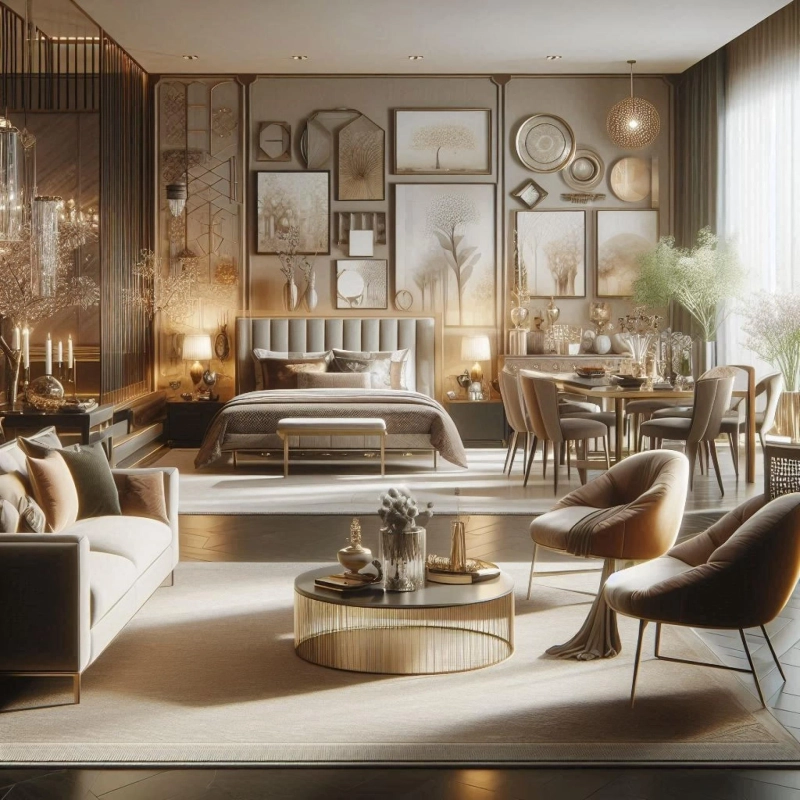Wood furniture-design is an age-old craft that combines functionality, beauty, and sustainability. This intricate art form has evolved over centuries, adapting to modern tastes while preserving its traditional roots. Our exploration of wood furniture design delves into its history, types of wood, design principles, and the environmental impact of choosing wood over other materials. We aim to provide a comprehensive guide that not only highlights the elegance of wood furniture but also offers practical insights for those looking to invest in or create these timeless pieces.
The Historical Evolution of Wood Furniture Design
Wood furniture-design has a rich history that dates back to ancient civilizations. From the ornate pieces of the Egyptian pharaohs to the minimalist designs of Scandinavian craftsmen, wood has always been a preferred material due to its versatility and durability.
Ancient Beginnings
In ancient Egypt, wood furniture was a symbol of status and wealth. Intricately carved chairs, beds, and chests made from rare woods like ebony and cedar were commonplace in the homes of the elite. These pieces were not only functional but also works of art, adorned with gold, ivory, and precious stones.
Medieval and Renaissance Periods
During the Medieval period, wood furniture became more robust and functional. Gothic designs featured heavy, solid oak pieces with intricate carvings and iron fittings. The Renaissance brought a resurgence of artistic expression, with Italian designers creating elegant, lightweight furniture that showcased their advanced woodworking skills.
Modern and Contemporary Designs
The 20th century saw the rise of modernism, where simplicity and functionality took precedence. Designers like Charles and Ray Eames revolutionized wood furniture with their innovative techniques and use of plywood. Today, contemporary wood furniture blends minimalist aesthetics with sustainable practices, appealing to eco-conscious consumers.
Types of Wood Used in Furniture Design
Different types of wood bring distinct qualities to furniture design. Understanding the characteristics of various woods can help in selecting the right material for your needs.
Hardwoods
Oak: Known for its strength and durability, oak is a popular choice for furniture that requires longevity. It has a prominent grain pattern and can be stained in various shades.
Mahogany: This reddish-brown wood is highly prized for its beauty and workability. It is often used in high-end furniture and cabinetry.
Walnut: Walnut is renowned for its rich color and straight grain. It is a favorite for crafting intricate furniture pieces due to its ease of shaping and finishing.
Softwoods
Pine: Pine is a versatile and affordable wood that is easy to work with. Its light color and distinctive knots add a rustic charm to furniture.
Cedar: Cedar is naturally resistant to moisture and insects, making it ideal for outdoor furniture. Its aromatic properties also make it a popular choice for closets and storage chests.
Fir: Fir wood is known for its strength-to-weight ratio and is often used in construction as well as furniture making. Its straight grain and uniform texture make it easy to work with.
Design Principles in Wood Furniture
The art of wood furniture design encompasses several key principles that ensure the creation of aesthetically pleasing and functional pieces.
Form and Function
The balance between form and function is crucial in furniture design. While the visual appeal of a piece is important, it should not compromise usability. Good design seamlessly integrates both aspects, creating furniture that is both beautiful and practical.
Proportion and Scale
Proportion and scale play a vital role in the overall harmony of a furniture piece. Designers must consider the dimensions of the piece in relation to its intended space. Proper scaling ensures that the furniture fits well within its environment without overwhelming or underwhelming the space.
Detailing and Finishing
Attention to detail is what sets apart exceptional wood furniture. This includes intricate joinery, seamless edges, and smooth finishes. The finishing process, whether it involves staining, varnishing, or painting, enhances the wood\'s natural beauty and provides protection against wear and tear.
Sustainability in Wood Furniture Design
Sustainability has become a significant consideration in modern wood furniture design. Consumers and designers alike are increasingly aware of the environmental impact of their choices.
Eco-friendly Materials
Choosing sustainably sourced wood is crucial. Certified woods, such as those approved by the Forest Stewardship Council (FSC), ensure that the material comes from responsibly managed forests. Additionally, reclaimed wood is gaining popularity for its environmental benefits and unique aesthetic.
Durability and Longevity
Investing in high-quality wood furniture that lasts for generations reduces the need for frequent replacements, thereby minimizing waste. Well-crafted pieces that age gracefully can be refurbished or repurposed, further extending their lifespan.
Non-toxic Finishes
Using non-toxic finishes and adhesives reduces indoor air pollution and enhances the safety of wood furniture. Natural oils and water-based finishes are excellent alternatives to traditional solvent-based products.
Conclusion
Wood furniture design is a timeless art that combines tradition, innovation, and sustainability. By understanding the history, types of wood, design principles, and the importance of sustainability, we can appreciate the true value of wood furniture. Whether you are a designer, a craftsman, or a consumer, embracing the elegance and durability of wood furniture is a step towards creating a more beautiful and sustainable world.



